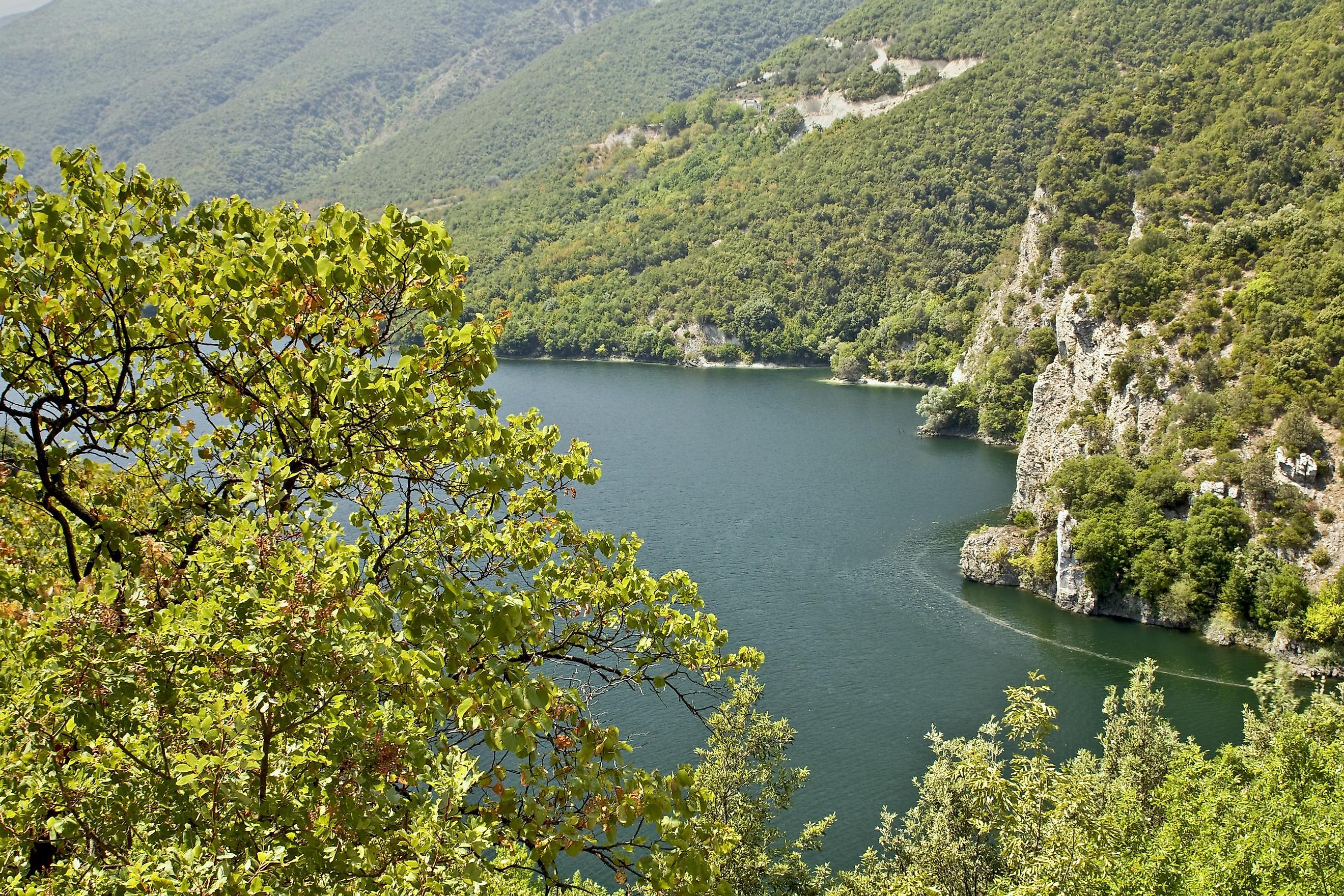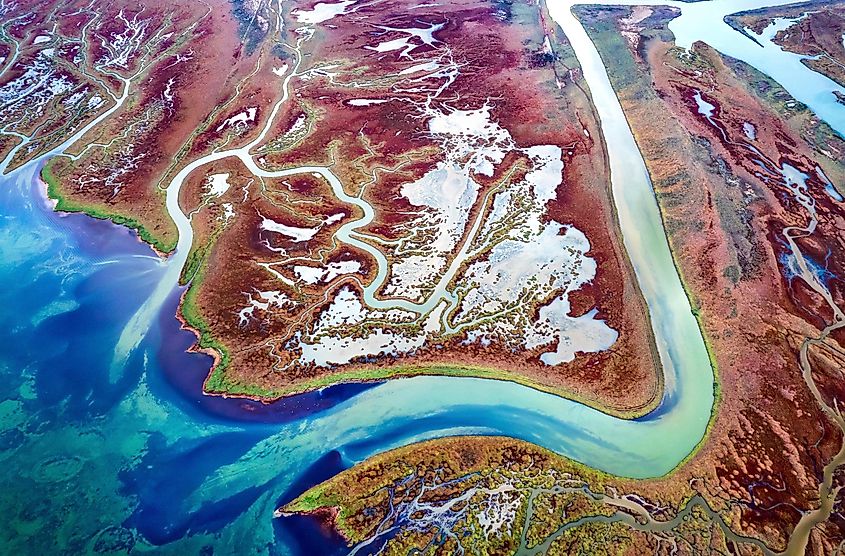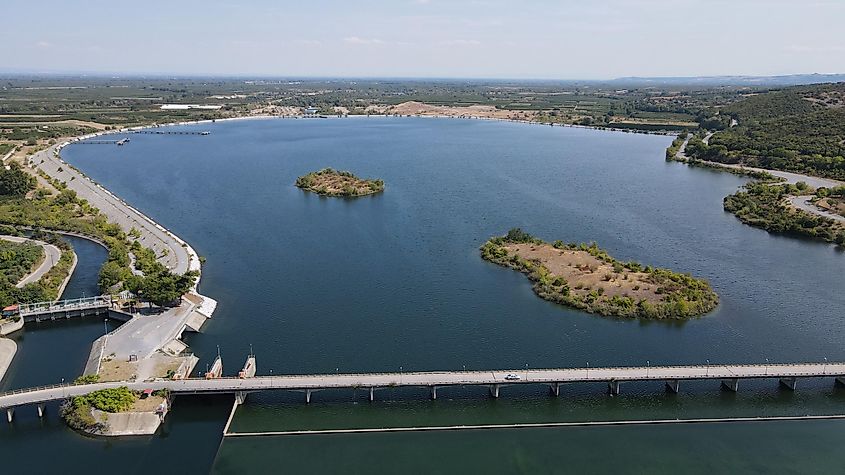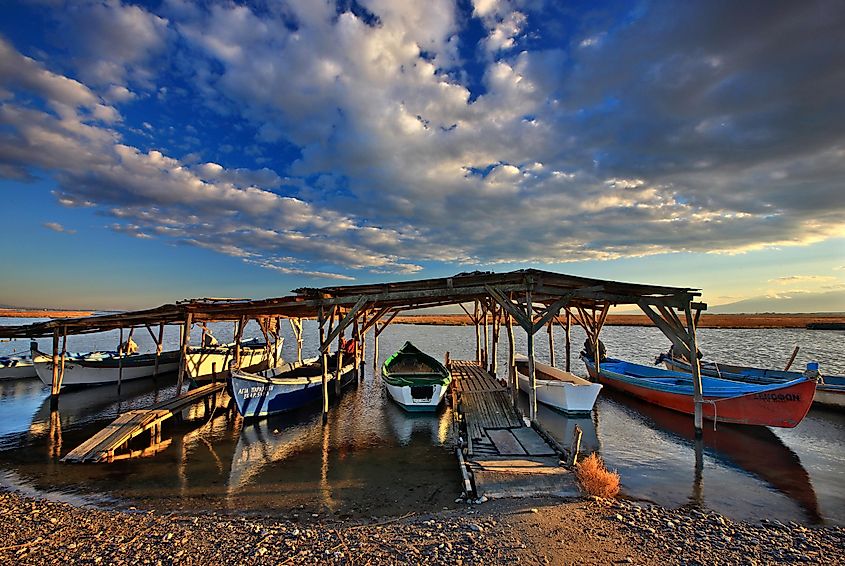
Aliakmon River
The Aliákmon River is the longest river in Greece, with a length of 200 miles (322 kilometers). It is the only large river that begins and ends in Greece. In the west, the river flows through Kastoria, Grevena, and Kozani regions. In central Greece, the river flows through Imathia and Pieria. The Aliákmon River has different spellings, such as Aliákmonas and Haliacmon. Depending on the map's origin, a variation of these names can be seen on maps today.
Twisting through Greece, the Aliákmon River provides water that sustains marshlands, forests, orchards, and plains along its banks. The river is essential in supporting resources for agriculture, industrial purposes, wildlife, and for hydroelectric power generation supplying electricity to local towns and municipalities. The river also acts as a source of recreation and tourism, bringing income to Greece. Mythology connected with myths and traditions associated with the river contributes to Greece's religious history. The fertile valley of the Aliákmon River provides ideal soil and climatic conditions that contribute to healthy and productive orchards.
Course Of The Aliákmon River

The river rises in the Grammos mountains of the Pindus Range near the Greek border with Albania. The Aliákmon River then curves around the Vouinos mountains. Twisting northeast near Paliouria village, the river feeds into the artificial lake, Polyphytos, in the region of Kozani. From the lake, the river turns southeast and flows through the ancient town of Veria. The Aliákmon River continues to flow through the Kozani prefecture. Enriched by the waters of the Venetikos and Grevenitikos Rivers, the Aliákmon River flows south. The river enters the central Macedonian plains before flowing into the Thermaic Gulf, west of Axios and northeast of Methoni. The Pramorítsa, Ventikos, Almopeos, Grevenitikos, and Edesseos are tributaries of the Aliákmon River.
Ecology

Before the construction of its dams, the Aliákmon River did not contain a permanent river bed, with its water level varying with the seasons. The river often flooded during extensive rains. Today, the dam of St. Barbara and the hydroelectric dam of Sfikia regulate the river's rise, protecting banks, towns, and ecosystems along its course.
At its source in the mountains, the Aliákmon River is home to the Pindos National Park, also known as Valia Calda National Park. The park is recognized globally as a protected area for endangered wildlife and includes eleven areas listed in the European Network of Protected Areas. The national park encompasses two national forests, the National Forest of Pindos and the Vikos-Aoos National Forest. The forests are home to birds, mammals, and fish. Species of birds include the golden eagle, osprey, and woodpecker. Mammals include bears, wolves, wild cats, badgers, hares, hedgehogs, and bats. The water of the Aliákmon River is home to tuna, salmon, and brown trout. The wetlands located along the river support fish populations and also provide grazing land for farm animals.
A Brief History
According to Greek mythology, Aliákmon was a river god, the son of Oceanus and Tethys. Stories claim that if a farmer's sheep drank from the river, the sheep's fleece would stay white. In ancient Greece, the river formed the border between Macedonia and Thessaly, protecting against enemies from the north. The river also provided a natural trading route. In 1941, during World War II, a New Zealand brigade used the river to defend against German forces invading Greece. The New Zealand brigade fell to the Germans and was taken as prisoners of war. Today, the river continues to provide a water source for local regions and wildlife.

Throughout history, the Aliákmon River has stayed its course. Wildlife and flora depend on the river as a source of survival. The river has consistently provided a water source for local livelihoods. Water from the river combined with abundant sunshine produces flavorful crops adding to Greece's culinary quality. Local tourism along the river encourages visitors to engage in Greece's rich history. Unique recreational activities along the river treat tourists to a stunning view. As the only river entirely in Greece, the Aliákmon River is depended upon to maintain quality of life.











